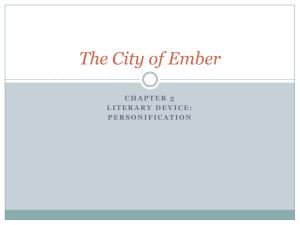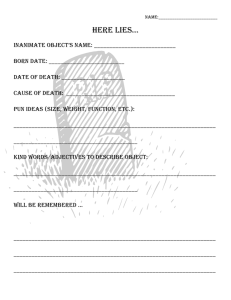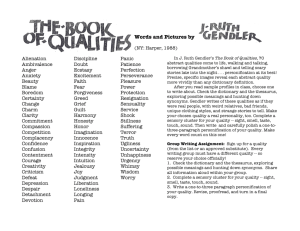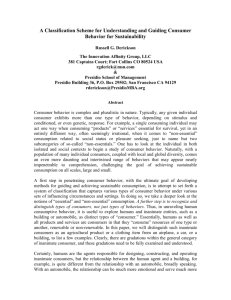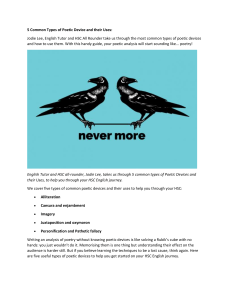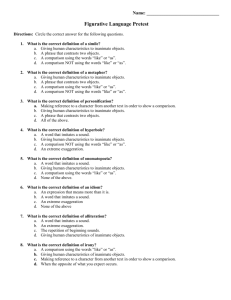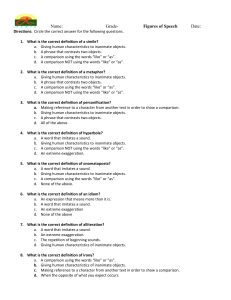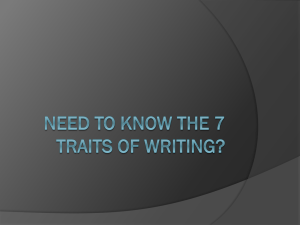Figures of Speech & Poetic Devices: Definitions & Examples
advertisement
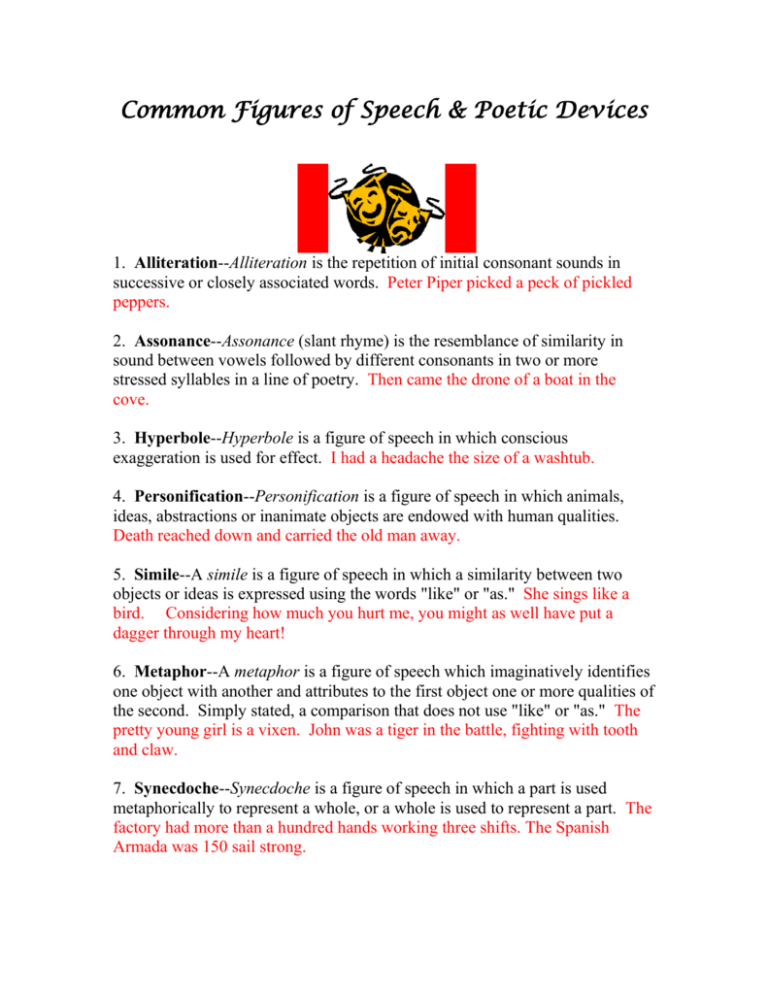
Common Figures of Speech & Poetic Devices 1. Alliteration--Alliteration is the repetition of initial consonant sounds in successive or closely associated words. Peter Piper picked a peck of pickled peppers. 2. Assonance--Assonance (slant rhyme) is the resemblance of similarity in sound between vowels followed by different consonants in two or more stressed syllables in a line of poetry. Then came the drone of a boat in the cove. 3. Hyperbole--Hyperbole is a figure of speech in which conscious exaggeration is used for effect. I had a headache the size of a washtub. 4. Personification--Personification is a figure of speech in which animals, ideas, abstractions or inanimate objects are endowed with human qualities. Death reached down and carried the old man away. 5. Simile--A simile is a figure of speech in which a similarity between two objects or ideas is expressed using the words "like" or "as." She sings like a bird. Considering how much you hurt me, you might as well have put a dagger through my heart! 6. Metaphor--A metaphor is a figure of speech which imaginatively identifies one object with another and attributes to the first object one or more qualities of the second. Simply stated, a comparison that does not use "like" or "as." The pretty young girl is a vixen. John was a tiger in the battle, fighting with tooth and claw. 7. Synecdoche--Synecdoche is a figure of speech in which a part is used metaphorically to represent a whole, or a whole is used to represent a part. The factory had more than a hundred hands working three shifts. The Spanish Armada was 150 sail strong. 8. Metonymy--Metonymy is a figure of speech in which a closely associated object is used metaphorically to represent the thing, person, etc. with which it is associated. All of Magwitch's fortune was confiscated by the crown. The White House issued a statement about the September 11, 2001 attacks. 9. Litotes--Litotes is a figure of speech in which something is expressed with a negation of the contrary. The soccer stadium was filled with no small number of exuberant fans. In Medieval England public hangings were no rare occurrence, and not a few of the citizens came to see them. 10. Pathetic Fallacy--A pathetic fallacy is a type of personification in which inanimate nature is given human qualities. Every flower enjoys the air it breathes. The happy sunshine streamed through the clouds into the peaceful valley. 11. Oxymoron--Oxymoron is a figure of speech in which opposites are paired for effect. Bittersweet. Jumbo shrimp. Deafening silence. 12. Onomatopoeia--Onomatopoeia is a poetic sound device in which words are used that actually simulate the sounds they represent. Crash. Bang. Pop. Pow. Rattle. 13. Apostrophe--A literary apostrophe is a type of personification in which an author addresses an inanimate or non-living object or idea as if that entity were alive and could converse with him. A good example is Keats' "Ode on a Grecian Urn" in which he directly addresses the urn. Another example is Shelley's "Ode to the West Wind" in which he speaks directly to the wind.
